Variegated bigleaf hydrangea
In March I planted a variegated bigleaf hydrangea (Hydrangea macrophylla ‘Tricolor’) in a large pot under the bay trees in our backyard. I had no idea that it would grow so quickly—and even flower just two months after planting.
I’m not a fan of the traditional mophead or pom-pom varieties (especially those that flower in shades of blue, which I find a bit creepy). On this cultivar, however, the variegated leaves are the star of the show, and any flowers are of secondary importance. At least that’s what I thought—until my ‘Tricolor’ began to bloom.
I was pleasantly surprised when I saw that the inflorescences (technically called “corymbs,” although there is no way I’ll ever remember this word) were quite different from the typical mophead hydrangea. Instead of round pom-poms, the inflorescences on Hydrangea macrophylla ‘Tricolor’ are the lacecap type. The actual (fertile) flowers in the middle are small and inconspicuous; the showier “flowers” on the outside are actually sepals. (In a conventional flower, sepals surround emerging flower buds to protect them from damage.)
All leaves on my Hydrangea macrophylla ‘Tricolor’ are variegated. Some even are completely white. That’s not something you see every day!
Variegation often slows a plant down because less chlorophyll is available for photosynthesis. Not so with this variety. It seems to be fairly vigorous grower. Check out the two photos below. They were taken just 10 weeks apart.
March 10, 2013
May 27, 2013
Hydrangeas are reputed to be hard to grow in the Sacramento Valley because of our hot summers. I hope that in my case this will turn out to be incorrect because I love the way this Hydrangea macrophylla ‘Tricolor’ brightens up the shady area under our bay trees.

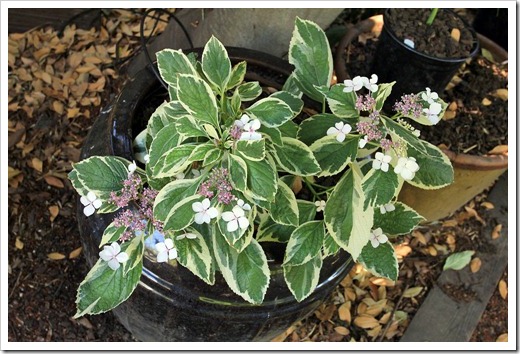
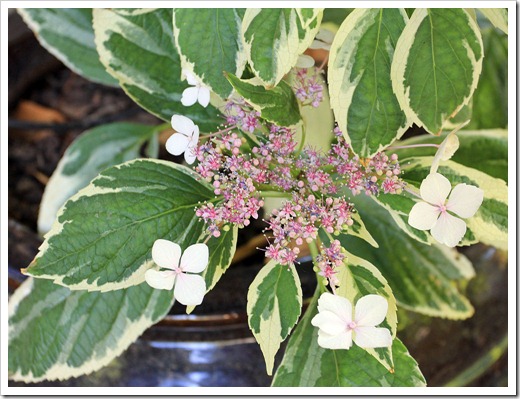

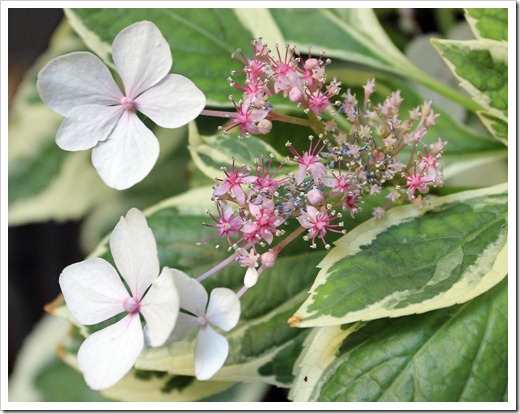
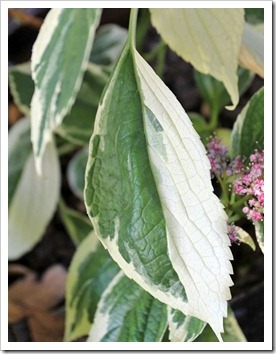
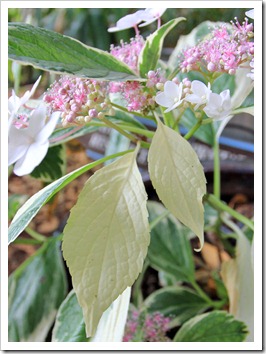
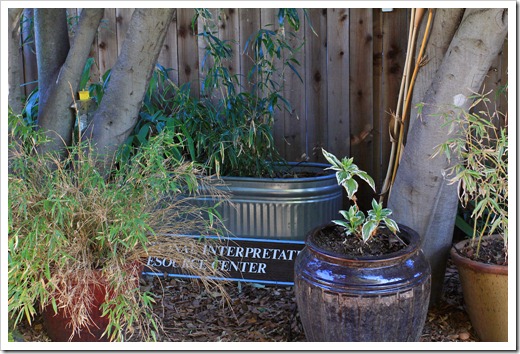
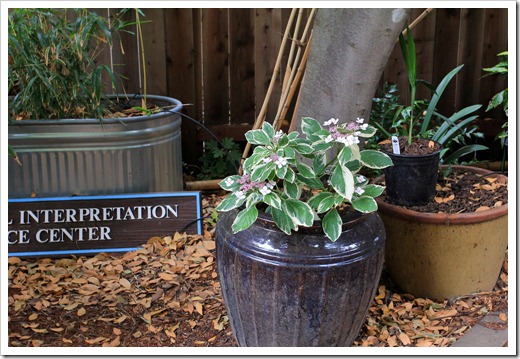
It's a lovely variegated Hydrangea, tried twice in our garden but it never thrives for some reason. Might try it again for the third time, might get lucky this time!
ReplyDeleteThat's surprising since it's supposed to be hardy to zone 5. Do try it again. It's a lovely plant.
DeleteI really prefer the lacecap blooms too!
ReplyDeleteMy first thought was: how are you going to keep that plant hydrated and happy? I have a couple of in-ground hydrangeas, and they require supplemental water even here. Looks lovely there though!
Why is it that lacecap hydrangeas are so much harder to find than mophead???
DeleteEverything in our garden gets irrigated from April to October. I simply used a rich potting soil that retains moisture and added a few inches of mulch on top so it should be fine it in this pot.
Do an update on this towards the end of summer, Gerhard. I suspect our lousy water will do a number on the leaves and they will brown badly around the edges. If not, I'll try to pick one up myself! Sue
ReplyDeleteWhat are you saying? Davis water is GOOOOD. Ha ha.
DeleteEven though I didn't plant this hydrangea until March, I bought it last fall so it's already received plenty of tap water. So far so good. I'll definitely let you know how it goes.
P.S. I got it at Lemuria Nursery in Dixon. 1-gallon plants are $5.
I can’t get mine to bloom. The old wood is always dead. Only thing that comes back every year is the veriegated leaves. As if it were a perennial. I have to cut back all the dead shoots/ branches.
ReplyDelete